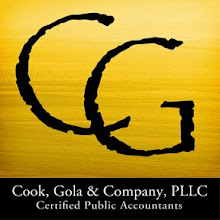Uncertainty is a factor in most tax planning decisions, but this year it is greater than ever. The recent decision by Congress to adjourn without addressing the expiring Bush tax cuts, as well as other items that expired at the end of 2009, leaves many tax advisors in the lurch.
With both political parties staking out irreconcilable positions - from the Republicans releasing a "Pledge for America" that calls for more tax cuts and the permanent extension of the Bush tax cuts, to the Democrats not extending those cuts.
"There's been universal frustration at the delays," said Robert Kerr, director of government relations at the National Association of Enrolled Agents. "The trend in the last few years has been to pass extenders at the end of the year. The extenders package, in addition to the tax rates, are up in the air. We go into November not knowing simple things such as whether the R&D credit exists, the deductibility of state and local sales taxes, or the Alternative Minimum Tax patch."
Yet planning, though difficult, is still possible and absolutely necessary, according to Greg Rosica, a tax partner in Ernst & Young's Tampa, Fla., office and a contributing author to the Ernst & Young Tax Guide.
"We're in a time of greater uncertainty when it comes to planning," he said. "But just because the legislative process has been delayed, it doesn't mean that taxpayers should. If they do delay, they might not be able to execute on ideas that make sense."
Rosica recommended planning a series of alternative scenarios based on the possibilities that might come out of the post-election process. "Instead of traditional year-end planning, we consider at least two different sets of assumptions," he said. "For example, Action List A would be the things to do if things stay the way they are. Action List B sets out the path to take based on various legislative changes. Once we get clarity as to what direction the rates will go, people can look at the list and execute the plan with the time remaining in the calendar year. Once we know what happens, we know what actions to take."
CORPORATE PLANNING
For private C corporations, Rosica recommended a look at accelerating dividends from 2011 to 2010. "If the corporation pays dividends, it should consider paying all its dividends, or as much as possible, in 2010 in light of the fact that there is currently a 15 percent tax rate on dividends that is scheduled to go up to 39.6 percent in 2011," he said.
Pass-through entities, such as partnerships and S corps, should re-evaluate their entity status, advised Rosica. "Is the S corporation or partnership status going to continue to make sense versus converting to a C corp? C corporation rates are not scheduled to change, but the flow-through rates are, so it's important to check where you are from an entity perspective," he said. "Even with an S corporation, there may be accumulated earnings and profits from a previous C corporation, so by accelerating some of these dividends there may be a more favorable tax result."
INDIVIDUAL PLANNING
"When you look at individuals, customary planning is 180 degrees different this year," said Rosica. "Traditionally you're looking to defer income and accelerate dividends, but now it's the opposite - accelerate income into 2010, and defer deductions till 2011, because income is worth more at lower tax rates, and deductions are worth more at higher tax rates. Real estate taxes, year-end deferred-compensation decisions, and charitable contributions are areas to consider."
"The important thing is to develop a plan with at least two different scenarios now so you will be able to execute it when the time comes. If you wait, you will be pushing up against a difficult time," he said.
All in all, this is a really tough time for those of us in the tax planning business. Our best advise is be prepared for anything.
Subscribe to:
Post Comments (Atom)



No comments:
Post a Comment